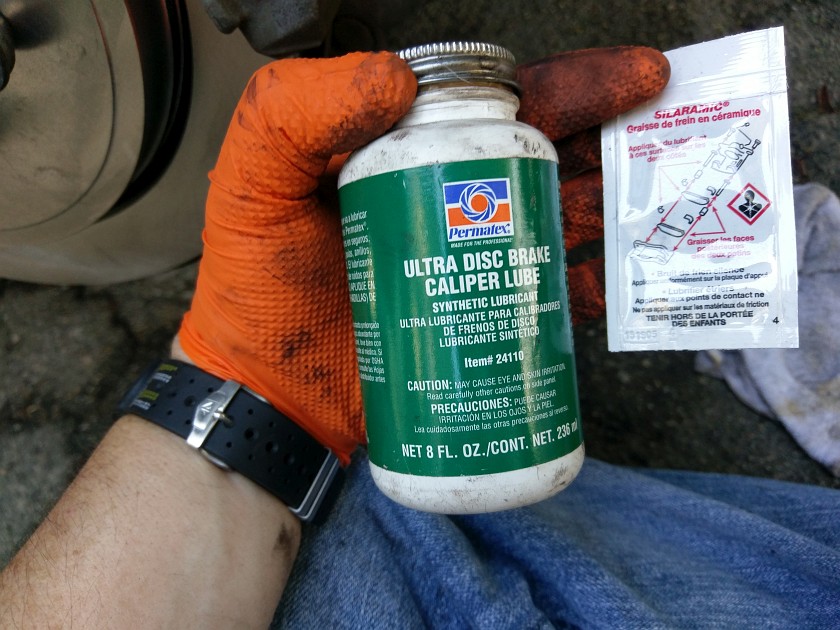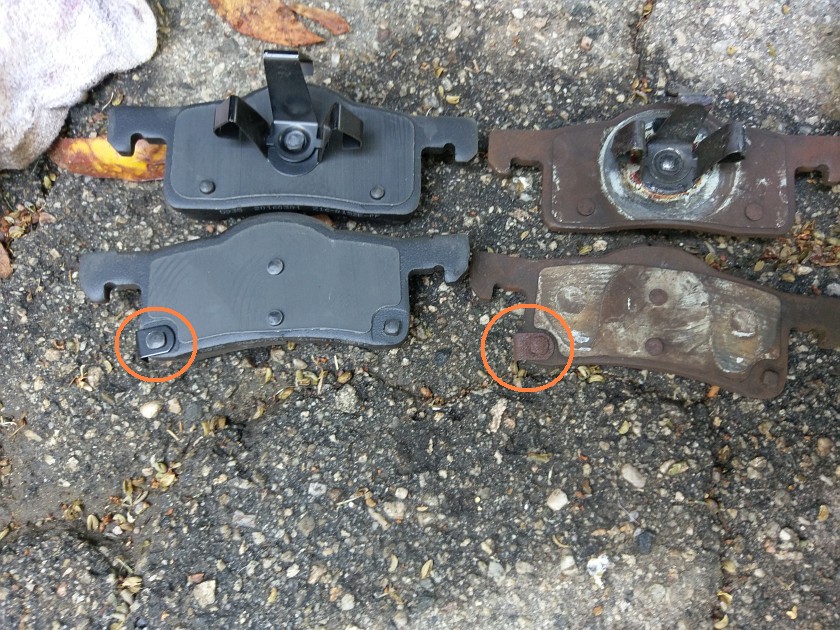Ford Expedition Rear Brakes - Installing Stuff
Your on the home stretch, now it's mostly re-assembly. It would be a good time to inspect your parking brake shoes, and if a problem you might want to address it now. I'm not, so I can't help with that. Make sure that you keep your parts grease free during the reassembly. I often grease up the required parts, then switch to a new set of rubber gloves. If you do smudge up things, just get some brake cleaner and a clean oil free rag and wipe it off. Lastly, if you have a second set of eyes, it's a good thing to have an 'inspector' take a look before your maiden voyage. Be safe, check twice.
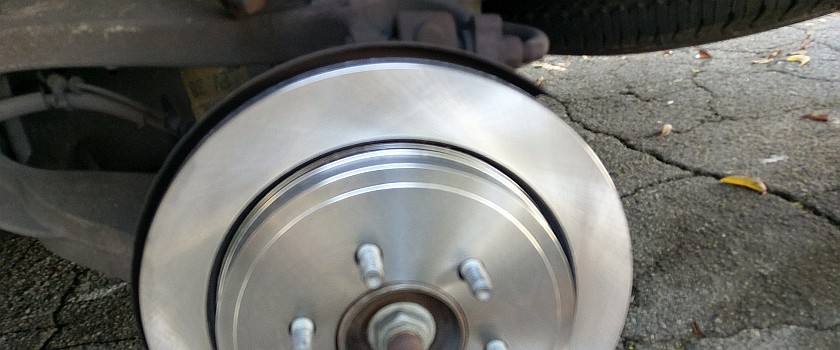
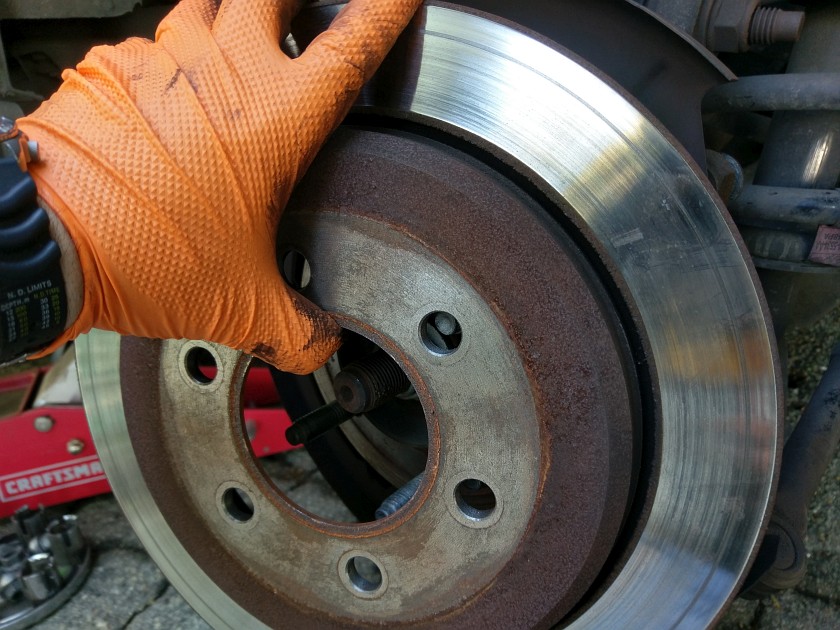
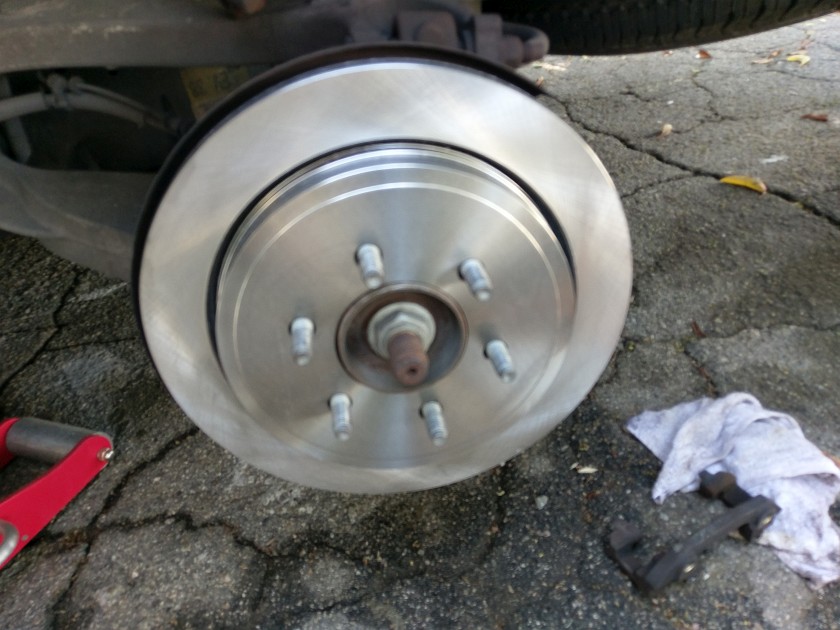
Removing Rear Rotor
First this is that your parking brake should be off you can't remove the rear rotors with it applied. That being said you should have chalks under the front tires for safety so nothing moves.
Once you remembered to release the parking brake the rotor 'should' just pull off. If you live in a wet climate this might not be the case. Depending on how bad it is, you may be able to tap around the edges with a wood block and heavy hammer. If you are not reusing the rotors put on some ear protection and wail on it with a small sledge hammer. If that doesn't work you might need to soak with some WD-40, Kroil, Liquid Wrench the areas where the studs and the center hole contact, let it sit, and get the hammer out again. When it finally does come off make sure none of the oil got on the parking brake inside the rotor.
Parking Brake Shoe
This is a close view of the parking brake shoe, it's in good shape and has a lot of material left. I have had to replace them on the Explorer where they were badly cracked and deteoriating. I lucked out here.
Rear Rotor Installed
This is the easy part, just pop back on the rotor on the rear hub. Sorry for the blurry picture, I had tears in my eyes as I was so excited. It's also very helpful to toss hand tight, a couple of lugs to hold the rotor flat on the hub. Will make reassembly much easier.
You can Navigate to any of the pages in this project by the BELOW drop down menu or use the NEXT or PREV links
Bolt the Caliper Bracket Back On
Using the 2 18mm bolts torque these down. I used a setting of 145 ft/lbs as that what I found as recommended on the web, and it was difficult to find that information. So, while that's what I used, you are on your own.
New Brake Pads
Time to check and get the new brake pads ready for installation. The ORANGE circle shows how to match the orientation of the antisqueel sensors on the outer brake pads. The inner pads seem to be the same, and they do not have the sensor. Again, keep the new pad surface clean from the upcoming grease down.
Inspect and Wrap Up
Ok, now the last clip are in place time to double check your bolts are all in, that you replaced the dust caps on the 7mm slide bolts, and that in general things look good and save. Double check you brake line to the caliper is not oddly twisted or worse cracked in any way. Again, a second set of questioning eyes are good here.
After you are sure you are good with your work, bolt up the wheel lugs to the recommend torque and work on the other side of the car. Keep an eye on the brake fluid as you compress the second wheel just in case it overflows you will have someone or something to catch the spilling fluid.
Before driving start the car and press the brake a couple of times to ensure that it is not going to the floor and feels good. Do not drive the car if your pedal drops to the floor. You may have to press it once or twice to push out the piston but it should quickly become hard as prior to the job. If you have any doubts as to the safety have your car towed to a shop that can fix it.
If I have forgotten anyting or got something wrong or you have a good tip shoot me a message by using the contact page.
